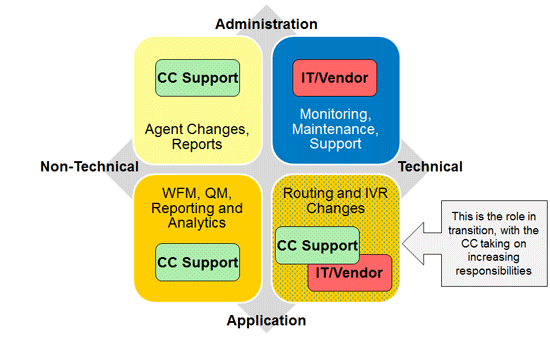When you want to implement new contact center technology capabilities – not just “lift and shift” your existing way of doing things – it takes time to design, configure, integrate, test, and roll them into production. You may also consider a phased or “MVP” (Minimum Viable Product) implementation. This post provides a list of best practices to factor into your planning processes.
Vendors typically build their Statement of Work (SOW) from a template. Read it carefully to make sure they address your specific needs with respect to:
- Scope
- Phasing
- Resources, roles, and responsibilities (theirs and yours)
- Resource engagement once you go-live to address issues and tune the technology
Vendors typically push for faster timelines than buyers can accommodate (because change takes more time – replication of current state does not!), ranging from weeks to months. Phasing and the level of level of integration and customization play important roles in the planning process. Make sure there is enough time for design which includes reviewing documentation, iterating (so they build what you really want/need), and testing (including addressing issues and retesting).
Speaking of resources… Be sure you address changes to your internal support roles – information technology (IT) vs. contact center (CC). The CC role changes the most with cloud solutions as the CC takes on increased responsibility. As you plan for these new roles, consider the training each requires and how you will maintain the requisite expertise. Think beyond initial assignments; consider succession planning. Your vendor should offer extensive online documentation for reference. They may also support a “university” with varied curricula by user type (e.g., administrator, supervisor, agent).
 Be explicit with respect to vendor management responsibilities. Your Vendor Manager will serve as a communicator and liaison with the vendor. That individual must have technical aptitude but understand the business needs. With premise solutions, the role typically sits in IT. With the cloud, it may reside in the contact center or be shared with IT. Regardless, roles and responsibilities must be clear and cover:
Be explicit with respect to vendor management responsibilities. Your Vendor Manager will serve as a communicator and liaison with the vendor. That individual must have technical aptitude but understand the business needs. With premise solutions, the role typically sits in IT. With the cloud, it may reside in the contact center or be shared with IT. Regardless, roles and responsibilities must be clear and cover:
- Performance management – SLAs, proper invoicing, etc.
- Trouble reporting/assessment/resolution – including root cause analysis and follow up, and changes to prevent future issues
- Understanding existing/new capabilities – and determining how (and when) to apply them to business needs
Many vendors publish uptime and performance data. Incident and upgrade notifications are typically sent via email (so make sure the proper people sign up!). Uptime SLAs are typically set at 99.99%-99.999% (although responsibility typically falls on the buyer to institute tracking and seek remediation!) Most contracts allow for a percentage discount on monthly licensing fees tied to shortfalls in performance.
Finally, determine what level of vendor support and engagement you want or need going forward. A Customer Success Manager (CSM) generally comes free, mostly to keep you happy and encourage sustained business. (Buy more!) A Technical Account Manager (TAM) may be a paid option should you require more active advocacy or help for internal resources. Consider Managed Services if you need the vendor (or their partner) to do routine work, such as moves, adds, and changes, etc.
